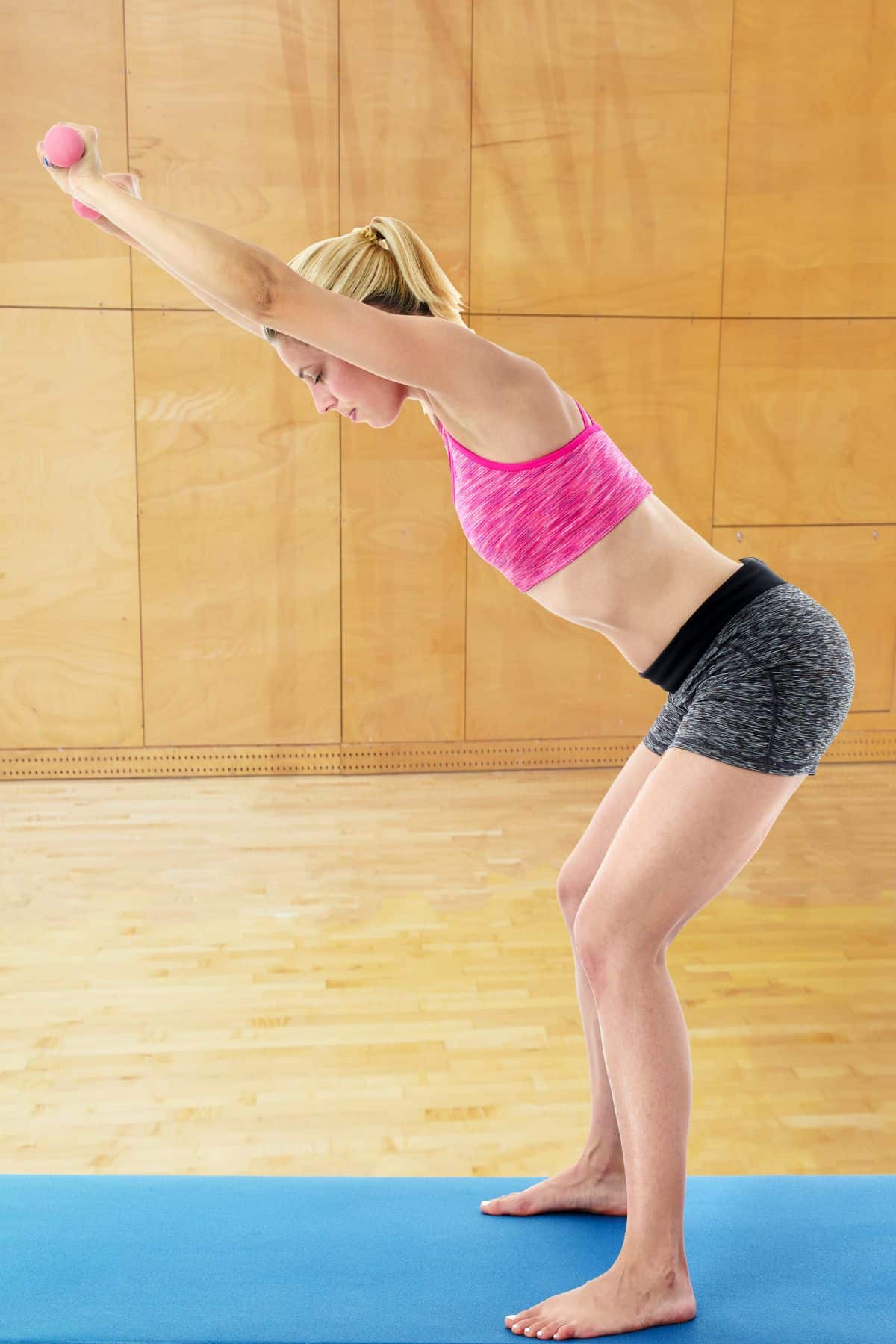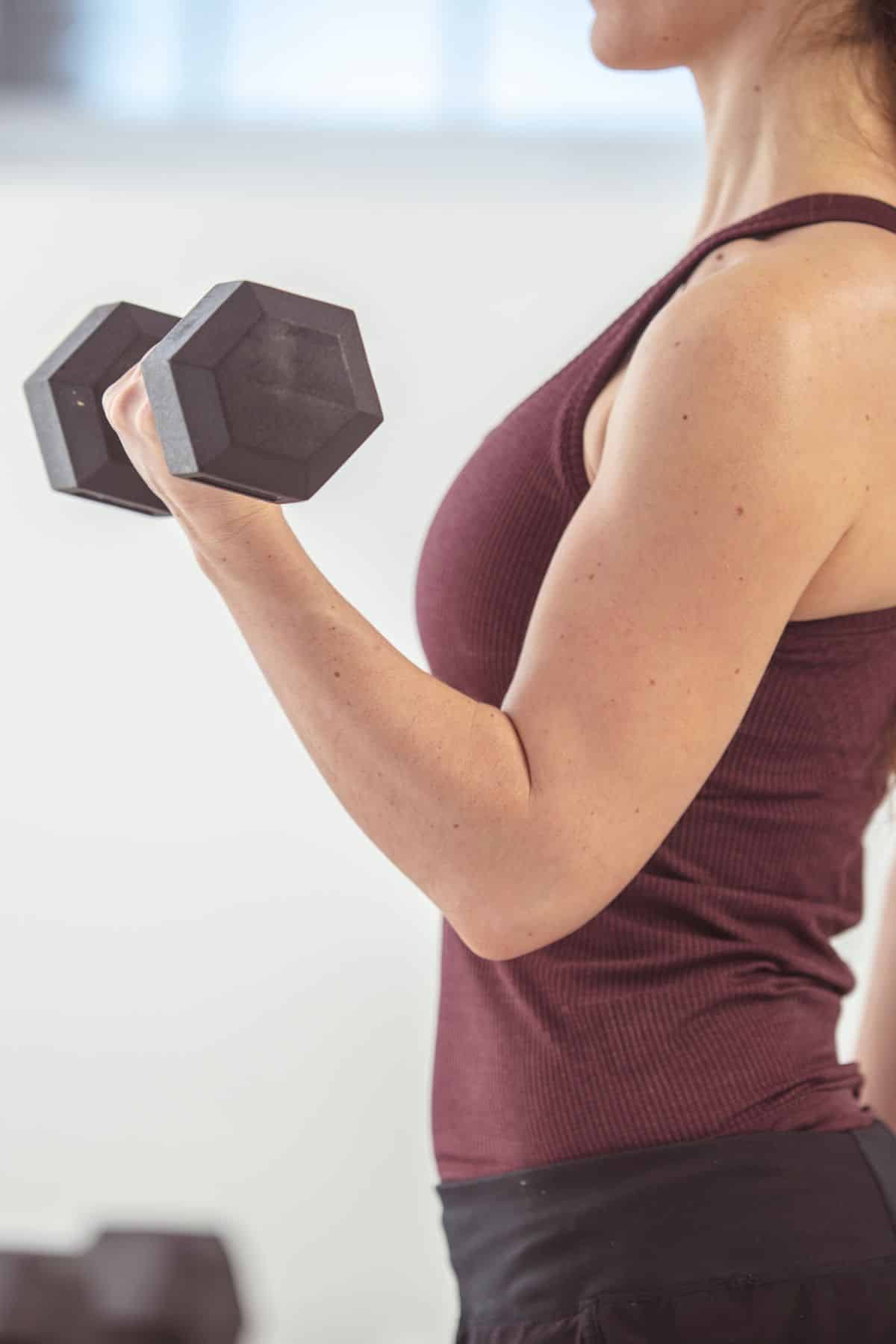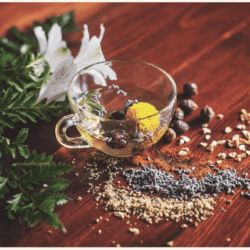10 Best Exercises for Autoimmune Disease (No Pain)
If you suffer from an autoimmune disease, you may need to adapt your exercise routine to your needs. In this article, I share the best exercises for autoimmune disease including Hashimoto’s disease, systemic lupus erythematosus, crohn’s disease, and rheumatoid arthritis. These gentle but effective exercises won’t leave you exhausted or in pain.

Autoimmune Disease and Exercise
If you suffer from an autoimmune disease, the thought of regular exercise may be intimidating. It can sometimes be hard to find the motivation or energy to increase your physical activity, especially during flares when your symptoms are worse.
But low-impact exercise can be incredibly beneficial, and in more ways than you might have considered.
Regular movement can give your energy levels a boost, making it easier to go about your daily activities and the thought of future exercise less daunting. It also improves your circulation, supporting detoxification and keeping the tissues in your body supplied with oxygen
Exercise releases lots of endorphins, too, the “feel good” hormones that act as natural painkillers and help ease the symptoms of anxiety and depression.
Finally, exercise can help reduce inflammation throughout your body – a key factor in keeping your symptoms under control.
Indeed, physical activity is so important that people who don’t move around enough are known to have an increased risk of developing autoimmune conditions in the first place.
But exercise doesn’t have to be punishing and unenjoyable. The key is to find a form of activity that you love doing – it will be just as effective, and you’ll be much more likely to keep it up! The benefits of exercise are so numerous that it’s worth finding a workout routine that makes you feel good.
Note: Be sure to speak to your medical provider before getting started and consider consulting a personal trainer or physical therapist to help get you started. They will be able to assess your current fitness levels and advise you appropriately on the best type of exercise and proper form.
Best Exercises for Autoimmune Disease
Here are some ideas to help you safely embark on an exercise regime that will bring you enormous rewards, both physically and mentally.
I personally have Hashimoto’s disease and chronic fatigue and find that a mix of these low-impact exercises help keep me feeling good without chronic pain or worsening my autoimmune symptoms. Daily exercise even when I’m not feeling 100% usually also helps my mood and overall mental health.
See more about my clean eating health journey.
1. Walking
Walking is a simple but effective form of low-impact exercise. It’s easy to do anywhere and won’t put too much strain on your body. Plus, walking is great for promoting your cardiovascular health and keeping your weight under control.
To get started with regular walking, begin at a pace that feels comfortable. Make sure your footwear is supportive, which will help minimize stress on your joints. You might also want to consider walking on a soft surface like grass rather than the road, as the impact forces will be much lower.
Over time, begin to increase the length and speed of your walks to make them a bit more challenging and to raise your heart rate.
If a symptom flare makes it feel as if a walk is too much, either take that day as a rest day or simply plan a shorter walk or at your own pace. You could also try walking in a pool – it reduces impact even more and makes you feel much more comfortable.

2. Yoga
Yoga can be hugely beneficial for people suffering from autoimmune conditions and experts have discovered that the practice can significantly improve the quality of life for patients with rheumatoid arthritis.
A gentle yoga practice involves stretches or movements to encourage better mobility and flexibility – an approach ideal for anyone experiencing the stiffness and inflammation common with autoimmune diseases.
Yoga also incorporates controlled breathing and meditation, so it can help reduce the stress that often triggers symptom flares.
To get started, use beginner-friendly poses, preferably from a gentle style of yoga like hatha or yin. These combine slow movements with long stretches to improve your flexibility. Just search for “gentle yoga” on YouTube and you’ll be sure to find several free videos to help get you started (see my related article on the Best Healthy YouTube Cooking Channels).
As you become accustomed to the movements, you can progress your poses as your comfort level dictates. Props like straps or blocks can help you modify poses if the strain feels too much.
Ideally, speak to a certified yoga instructor familiar with autoimmune conditions for personalized advice.
3. Pilates
Pilates – either practiced on a mat or with a reformer – is another low-impact form of exercise ideal for anyone with conditions like Hashimoto’s, lupus, and rheumatoid arthritis.
Using controlled movements, it focuses on core strength and flexibility without placing undue demand on the joints.
Mat pilates is the easiest to start with as no equipment is required. Focus on foundational exercises such as single leg stretches and pelvic curls at first, only progressing to more advanced movements as your comfort levels allow.
As with yoga, props can be useful for adding support to make certain moves more achievable.
I’d also recommend speaking to a qualified Pilates instructor who understands autoimmune conditions to discuss specific adaptations tailored to your needs.
Read more about the different types of pilates.

4. Stretching
Stretching is extra important if you suffer from an autoimmune disease. Not only does it improve your joint flexibility, but it reduces tension in your muscles and alleviates stiffness, both common problems with autoimmune conditions.
Studies have shown that stretching as a type of exercise can also help reduce chronic inflammation.
To get started with stretching, use a mat and focus on simple, dynamic stretches – active movements where your muscles and joints go through a full range of motion. These will improve your blood flow and warm up your muscles.
You can then start incorporating some static stretches, where you stretch a muscle as far as feels comfortable, and then hold the position for 15 to 30 seconds. Try paying particular attention to the muscles where stiffness bothers you the most.
Be sure not to push through a stretch if you feel any pain. Instead, recognize your limitations and focus instead on stretching regularly. Over time you should begin to notice a welcome increase in your range of motion.
5. Light strength training
Proven to reduce inflammation and improve immune function, light strength training (also called resistance training or weight training) is also a great way to build up your muscle strength and promote joint stability.
It can improve your bone density too – ideal for anyone at risk of osteoporosis – and supports functional fitness, helping you go about your daily activities pain-free.
It’s important to use only light resistance at first. I recommend starting with bodyweight exercises, focusing on the major muscle groups. Aim to be consistent and you’ll soon find yourself ready to progress, either to resistance bands or light dumbbells.
Avoid exercising the same muscle groups two days in a row. To see progress, you’ll need to give your muscles time to repair and recover.

6. Tai Chi
This ancient Chinese practice has been confirmed by modern researchers to be effective for people with autoimmune disorders, both helping reduce inflammation and encouraging the immune system to work more effectively.
Gentle but powerful, it combines slow, flowing movements with mindfulness and breathing techniques, not only healing the body but helping calm the mind, too. Best of all, its slow and deliberate nature makes it suitable for all fitness levels.
The best way to begin Tai Chi is to learn simple forms – the UK’s NHS publishes a very helpful hand-out showing all the basic movements.
Many movements can be performed either seated or standing, making them accessible even if joint pain limits your motion.
Slowly progress to more complex sequences as you become accustomed to the forms, always ensuring your body is aligned.
Consult a reputable instructor for specific advice about the best forms and stances for your needs.
7. Elliptical machine
Exercising on an elliptical is often recommended for people with arthritis.
That’s because it strengthens your muscles and boosts your cardiovascular system without putting stress on your joints.
With an elliptical, both your feet always stay in contact with the machine throughout the flowing movements. This gives you a full-body workout while keeping your knee in a stable position.
When you first use an elliptical machine as part of your exercise program, start at a comfortable pace and focus on smooth, controlled motion.
When you are ready, adjust the resistance to increase the challenge, and/or work for longer sessions.
You can use the handrails for a bit of extra stability if you need it, but try to rely on them less over time to encourage your body to work harder.
8. Swimming
Swimming is kind to your joints because the buoyancy of water supports your body weight. But it’s also very effective, as water resists movement more than air and makes your muscles work harder.
For a low-impact, full-body workout, start with gentle strokes like breaststroke or freestyle. Gradually increase the duration of your swimming sessions as you build strength.
To keep things interesting and for a broader range of benefits, try also incorporating water aerobics or water walking into your routine.
I recommend swimming in a heated pool if you have an autoimmune condition, as the warmth can help soothe joint pain.

9. Low-impact dancing
Low-impact dancing is proof that great exercise doesn’t need to be hard work. Combining rhythmic movements with minimal joint impact is good for your cardiovascular fitness, flexibility, and coordination.
What’s more, it’s lots of fun!
Good dance styles to choose from initially include low-impact aerobics, salsa, line dancing, or even belly dancing. All of these use gentle movements that also involve brain function. Start with very simple routines then increase the intensity as your fitness improves.
If joint issues make even simple movements difficult, use a chair for added stability, or try dancing in water instead.
10. Cycling
Like walking, cycling is an excellent low-impact cardio activity that gets you outdoors and strengthens your muscles, so it can be mentally uplifting and physically rewarding.
And, of course, there’s always the option to use a stationary bike in the gym during the colder winter months.
To get started, pick short, relatively flat routes for outdoor cycling, or use a stationary bike with the resistance at the lowest setting. You can increase the length and intensity of each session as you feel yourself growing stronger.
If you find that back pain makes cycling uncomfortable, then try using a recumbent bike in the gym. This places you in a reclined position with back support, so you don’t need to hold yourself upright.
It doesn’t give you as intense a workout as an upright bike, but it’s still a very good form of cardio. And because you’re comfortable, you’ll be able to work out for longer.

Chronic Disease and Exercise FAQs
HIIT – High-Intensity Interval Training – may be helpful for people with autoimmune conditions. It involves short bursts of intense exercise followed by periods of rest and recovery.
HIIT can take many forms – it doesn’t have to be a structured exercise session. For example, you could focus on quickly running up the stairs, resting, and then repeating.
If you’ve never done it before, I recommend taking it slowly at first, and only with approval from your healthcare provider.
Start with very short intervals of exercise with less intensity and only increase them when you feel comfortable. If you are experiencing a flare-up of your autoimmune disease symptoms, then you may wish to skip HIIT training or reserve it just for good days.
There’s no set amount of exercise that you should do each day if you have an autoimmune condition. The best approach is to listen to your body and do what works for you.
Good targets to aim for are around 150 minutes of moderate-intensity aerobic exercise per week, broken down into manageable time periods – and at least 2 sessions per week of light strength training.
Incorporate flexibility and balance exercises like yoga and stretching as often as you can.
Whatever form your exercise takes, focus on starting gently and building up. Accept that flares may cause you to miss certain days, but don’t see that as a failure. Just pick up where you left off as soon as you’re feeling better.
Although it’s good to challenge yourself, be careful not to overdo it.
Too much exercise can actually worsen inflammation and symptoms, whereas moderate exercise with adequate rest periods will benefit you the most.
Don’t Miss These Holistic Health Articles
Autoimmune Disease and Exercise Conclusions
Regular exercise shouldn’t be something you dread, even with chronic disease. Instead, gentle movement should be something you enjoy. Walking, dancing, swimming, and cycling are all excellent examples of low-impact physical activity that will improve your health and boost your quality of life.
Once you have the approval of your healthcare provider, start slowly and gradually increase the amount of exercise you do. You’ll soon enjoy the physical and mental benefits that consistent activity can bring.
Don’t forget to join my newsletter list to get exclusive clean eating recipes and tips. The newsletter is 100% free with no spam; unsubscribe anytime.
About the Author: Carrie Forrest has a master’s degree in public health with a specialty in nutrition. She is a top wellness and food blogger with over 5 million annual visitors to her site. Carrie has an incredible story of recovery from chronic illness and is passionate about helping other women transform their health. Send Carrie a message through her contact form.
Note: this post is for informational purposes only and is not intended as medical advice. Please consult your healthcare provider for recommendations related to your individual situation.






















